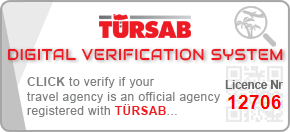Cardiology
Interventional Cardiology :
Recognizing the need for rapid intervention in heart disease, we work with hospitals that has qualified staff present 24 hours a day. In emergencies, primary PTCA/stent procedures open the heart vessels immediately and interventions are performed by professional physicians. The Cardiology Clinic provides world-class medical services. Every year, thousands of types of heart disease are diagnosed and treated in our hospital.
We list some of the diseases diagnosed in the cardiology department, as follows:
Diseases coronary arteries
Cardiac insufficiency
violations of cardiac rhythm
disease valves hearts
Diseases aortic vessels
Diseases peripheral vessels
Hypertension
Hyperlipidemia/dyslipidemia (diseases of lipid metabolism).
Examinations and procedures carried out in our cardiology center
Electrocardiography (ECG): The first method used to diagnose heart disease is EKG. The ECG is taken using electrodes attached to the chest, arms, and legs of the patient.
Echocardiography (IVF): ECHO, which is used in the diagnosis of heart failure and valvular disorders, provides an examination of the structure of the heart.
Load (stress) test: Load test, also known as stress EKG, shows that heart rate and workload increase when the patient exerts effort on the treadmill; This is a procedure in which the reactions of the heart are monitored using serial ECGs during exercise.
Stress echocardiography: This is a dynamic echocardiography (ultrasound of the heart) technique that has applications such as increasing the heart rate within a certain range during exercise or intravenous drug use, neovascular occlusion in the heart, vital activity in the area of a previous heart attack, and determining the degree of valve stenosis. It is an extremely useful diagnostic tool without the use of radiation in terms of deciding whether a patient needs coronary angiography. The procedure lasts an average of 30 minutes, after the patient undergoes echocardiography at rest, repeated injections are repeated, increasing the heart rate with medication or with the help of physical exercises. This test
Holter (blood pressure + Holter rhythm monitoring, 24, 48, and 72 hours): a wearable device that can monitor a patient’s heart rate is called a Holter. Cholesterin may need to remain in the body for 24, 48, or 72 hours to examine the heart rate. Holter blood pressure monitoring is used to measure blood pressure at certain periods in vivo over 24 hours. Based on the results of these examinations, if necessary, drug therapy can be used; even with some severe rhythmic conduction disturbances, a permanent pacemaker (biventricular ICD, CRT) can be placed.
Coronary angiography and procedures with balloon stenting: coronary angiography produces images of the vessels that feed the heart. Since local anesthesia is used during angiography, the patient does not feel any pain or pain. Depending on the angiography technique, the patient may need to stay in the hospital for a certain period. In cases deemed necessary after angiography, therapeutic balloon and stent procedures are also performed.
Transesophageal echo ( TEE ) for short: Cardiac endoscopy, also known as detailed cardiac ultrasound, is an ultrasound of the heart performed using a thin tube that is passed from the mouth into the esophagus. Before the procedure, the patient is given light anesthesia. Holes in the heart, clot formation, valve problems (leakage or stenosis), prosthetic valve visualization, aortic dilation, and ruptures that cannot be seen on cardiac ultrasound can be seen in a short time with TEE, and the diagnosis and treatment can be resolved. TEE performed with newly developed devices and systems is now easier, faster, and more diagnostic. Some holes in the heart are diagnosed with TEE, and the patient is sent for surgery. Sometimes it can also be used during surgery to monitor the condition of the heart. It is enough for the patient to be on an empty stomach and feel thirsty for 6 hours before TEE. There is no need to stop taking any medications first.
CT coronary angiography: CT coronary angiography is a tomographic imaging technique using a contrast agent. This is a method that helps in planning the treatment of many diseases, such as anatomical disorders in the heart and coronary artery stenosis.
Calcium screening: in calcium screening performed in the coronary vessels, the drug is not administered intravenously, and the result is obtained in a short time, approximately 15 seconds. By detecting calcium accumulated in the veins, one can determine the risk of heart disease and take precautions for early diagnosis.
Perfusion scintigraphy of the myocardium. Myocardial perfusion scintigraphy, carried out with exercise or medication, is used to diagnose coronary heart disease.
Venous and arterial Doppler ultrasonography: these tests are used to diagnose arterial and venous problems.
Other procedures performed at the department
Implantation of temporary and permanent pacemakers
Replacement pacemaker
Endovascular intervention.

